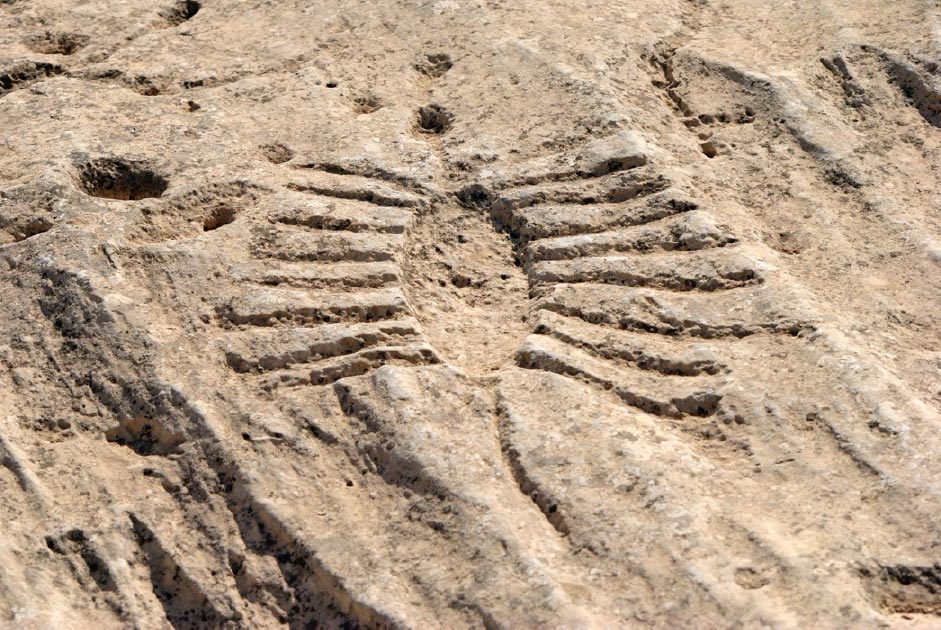Creators of the 800 Al Jassasiya Rock Carvings Remain Undetected
While some societies leave few remains, especially if they were not literate, rock carvings have helped historians understand prehistoric people and mysterious cultures. Some of the most impressive rock carvings in all of the Middle East are the Al Jassasiya rock carvings in Qatar. They are a remarkable set of petroglyphs, but their creators and their meaning, remain a mystery. This site is perhaps the most important historic site in Qatar and has become a popular tourist destination.
The History of Al Jassasiya Rock Carvings
There is little documentary evidence with regard to Al Jassasiya. The rock carvings were only fairly recently discovered in the 1950s by a British team of archaeologists working with locals.
The etymology of the name of the area gives a clue to its history. Al Jassasiya means the ‘hill’ or ‘the searchers’ in Arabic. The hill overlooks the sea and it was likely used to observe ships. The earliest evidence for human habitation in the area was in the 10 th and 11 th centuries when Qatar was a crucial hub in international trade networks and became famous for its pearls. A great many potshards have been found from the period.

Rocky desert landscape of Al Jassasiya, Qatar (Alizada Studios / Adobe Stock)
Intriguingly, the area is close to the abandoned town of Al Huwaila, a port that flourished between the 16 th and the 18 th century before the population moved elsewhere. It is believed that the area was a lookout and was possibly used by pearling boats.
Some have argued that the rock carvings were related to the pearl trade, while others believe that the age of the rock carvings are older by thousands of years. That would mean that these relics would be the work of a prehistoric culture. There is no agreement as to the purpose of the rock carvings and they are still an enigma decades after they were first studied.

This photo captures two of the main patterns that are found throughout the site - two rows of parallel dots (top), and a circular cluster of dots (bottom right). (Peter Dowley / CC BY 2.0)
The Mysteries Carvings at Al Jassasiya Rock, Qatar
The carvings were found on jabals (hills) on a limestone escarpment approximately 20 feet (7 meters) high. This area can be seen for miles thanks to the flat and arid plains of Qatar. In total there are some 880 petroglyphs at the site, and they stretch across an area 700 meters (roughly half a mile) wide.
Theories have evolved to explain the patterns and holes carved into the soft limestone. One argues that they are part of a board game, possibly played by local pearl fishermen, while another theory is that the holes were used to store pearls.
- The Mysterious Petroglyphs of Ometepe, Nicaragua
- Archaeologists Discover Rare Seventh century Islamic dwelling in Qatar
- World’s Oldest Pearl Found in Abu Dhabi is 8,000-Years-Old!

Mysterious holes of Al Jassasiya, purpose unknown (Alizada Studios / Adobe Stock)
A large number of geometric, circular carvings have frequently been likened to cup marks. These are possibly symbols, but there is no agreement on their meaning, although they are similar to patterns found in Europe.
The most important petroglyphs that have been found in the area are those of boats. There are roughly a dozen other sites with rock carvings, yet the one at Al Jassasiya is the only one with boats. Researchers have categorized these into two types - those drawn in elevation and those rendered in 2-dimensional plan. The majority of the boats are in 2D plan and they are mostly located on one particular ridge. Those drawn in elevation are possibly of a later date and they seem to represent dhows with oars, and possibly relate to pearl fishing. Some of the earlier carvings had sails and oars added to them.

This carving could represent a boat with oars, or a creature, or an eye. (Peter Dowley / CC BY 2.0)
There are also a number of what appear to be handprints carved into the rock, which are very enigmatic. Some ruined buildings from the 15 th century have also been located at Al Jassasiya.
Visiting the Al Jassasiya Carvings in Qatar
The site is located north of Doha and tours to the area can be booked. The carvings are protected by the government and fenced off as touching them is not allowed.
Due to the landscape here, there is no shade and the best time to visit is in the morning. For those who like the heat, there are some great hiking trails in the area, and it is possible to see various species of lizards.
Top image: Boat with oars on a rock, Al Jassasiya, Qatar Source: Alizada Studios/ Adobe Stock
By Ed Whelan
References
Facey, W. (1987, January). The boat carvings at jabal al-jussasiyah, northeast Qatar. In Proceedings of the Seminar for Arabian Studies (pp. 199-222). Seminar for Arabian Studies
Available at: https://www.jstor.org/stable/41223055?seq=1
Hassiba, R., Cieslinski, G. B., Chance, B., Al-Naimi, F. A., Pilant, M., & Rowe, M. W. (2012). Determining the age of Qatari Jabal Jassasiyah petroglyphs. QScience Connect, 2012(1), 4
Available at: https://www.qscience.com/content/journals/10.5339/connect.2012.4
Pelling, R., Cuttler, R. T., al-Naimi, F. A., Reis, A. O., & Delaney, L. (2015, January). A re-examination of the petroglyphs of Qatar. In Proceedings of the Seminar for Arabian Studies (pp. 217-231). Archaeopress
Available at: https://www.jstor.org/stable/43783635

















